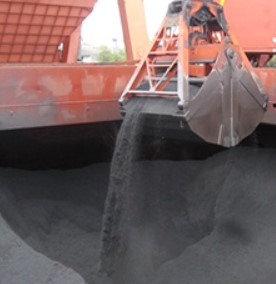The primary aim of the International Maritime Solid Bulk Cargoes Code (IMSBC Code) is to facilitate the safe stowage and shipment of solid bulk cargoes by providing information on the dangers associated with the shipment of certain types of solid bulk cargoes and instructions on the procedures to be adopted when the shipment of solid bulk cargoes is contemplated.
The IMSBC Code harmonizes the practices and procedures to be followed and the appropriate precautions to be taken in the loading, trimming, carriage and discharge of solid bulk cargoes when transported by sea, ensuring compliance with the mandatory provisions of the SOLAS Convention. As per IMSBC Code, solid bulk cargoes are classified as follows: Cargoes that are liable to liquefy (Group A), Cargoes having chemical hazard (Group B) and Cargoes other than formers (Group C).

As per resolution MSC.426(98), amendments and a full list of the new cargoes have been added to the IMSBC Code. The main amendments are the following:
– Updated individual schedules for solid bulk cargoes.
-Responsibilities regarding Transportable Moisture Limit (TML) determination test, required sampling and testing intervals for moisture content before loading Group A cargoes (cargoes that are liable to liquefy).
– Classification of coal has been amended so that it will be treated as both Group A and B, unless classified as Group B only by a test determined by the appropriate authority or where it has the following particle size distribution: not more than 10% by weight of particles less than 1 mm (D10 > 1mm); and not more than 50% by weight of particles less than 10 mm (D50 > 10 mm). Notwithstanding the above, a blend of two or more coals shall be classified as Group A and B unless all original coals in the blend are Group B only.
-13 new schedules have been added to Appendix 1 for the following: Foam Glass Gravel, Iron Smelting By-Products, Metal Sulphide Concentrates, Corrosive UN 1759, Monoammonium Phosphate (M.A.P), Mineral Enriched Coating, Monocalciumphosphate (MCP), Olivine Sand, Olivine Granular and Gravel Aggregate Products, Sand, Mineral Concentrate, Radioactive Material, Low-Specific Activity (LSA-I) UN 2912, Silicomanganese (carbo-thermic), Sugarcane Biomass Pellets, Synthetic Calcium Fluoride, Synthetic Silicon Dioxide, Titanomagnetite Sand.
– Modified Proctor/Fagerberg test procedure to be used for determining the TML of coal up to 50mm in size and relevant amendments to the individual schedule of coal.
As per MEPC.277(70), it is mandatory for shippers to declare whether a solid bulk cargo is classified as HME (harmful to the marine environment) or non-HME.
Source: MSC.426(98), MEPC.277(70)
Contact us to receive a professional advisory in your area of interest.
